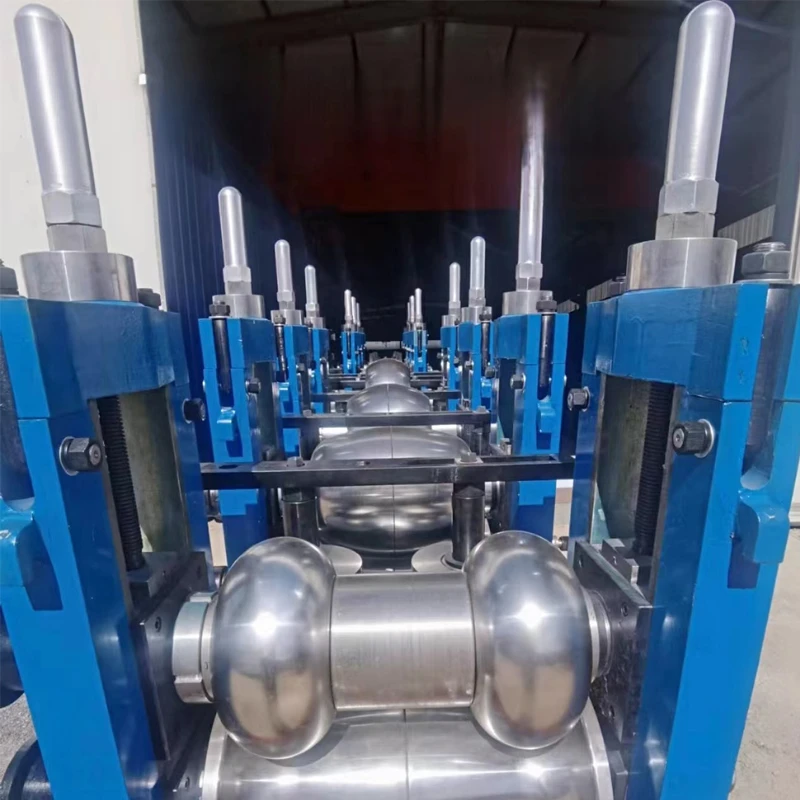Understanding the Twin Roll Mill Process for Enhanced Material Fabrication
The Twin Roll Mill An Overview
The twin roll mill (TRM) is an essential piece of equipment in the field of polymer and material processing. Its design and functionality make it an indispensable tool for mixing, compounding, and refining materials in industries ranging from rubber and plastics to food production. Understanding the core principles of the twin roll mill can help us appreciate its importance and versatility.
Structure and Functionality
A twin roll mill consists of two horizontally mounted counter-rotating rolls. These rolls, typically made of hardened steel, rotate in opposite directions and are positioned very close together, allowing for fine control over the material being processed. The distance between the rolls can be adjusted to accommodate various processing requirements, which enables different thicknesses and textures of the final product.
As materials, often in the form of pellets or sheets, are fed between the rolls, they are subjected to intense mechanical shear forces. This process not only mixes the materials thoroughly but also redistributes heat which can alter the thermal properties of the mixture. This high shear environment is particularly useful for compounding polymers, as it ensures even distribution of additives, fillers, and other components throughout the primary material, resulting in improved physical and chemical properties.
Applications of Twin Roll Mills
Twin roll mills are utilized across a broad range of applications. In the rubber industry, they play a crucial role in the production of various rubber goods, including tires and seals. The TRM allows for uniform mixing of rubber compounds, which is essential for achieving optimal performance characteristics in the final products.
twin roll mill

Moreover, in the plastic industry, twin roll mills are instrumental in blending different polymer resins and incorporating additives such as colorants, UV stabilizers, and processing aids. The precise control over mixing parameters facilitates the creation of custom materials tailored for specific applications, be it for packaging, automotive parts, or consumer goods.
Beyond rubber and plastics, twin roll mills are also finding applications in the food industry, particularly in the production of confectionery and chocolate. The TRM can be used to ensure that ingredients are evenly mixed, contributing to the consistent quality of the final product. Additionally, the controlled heating and cooling capabilities of the mill make it possible to manipulate the texture and mouthfeel of food products.
Advantages of Using Twin Roll Mills
The use of twin roll mills offers several advantages. One of the most notable is the efficiency of processing, as large quantities of material can be handled quickly. Furthermore, the accurate control of mixing can lead to reduced batch variations, ensuring that production remains consistent from batch to batch.
Another key benefit of the TRM is the ability to recycle materials. The twin roll mill is well-suited for incorporating recycled materials into new products, aiding in sustainability efforts within industries. This recycling capability not only conserves resources but also reduces production costs.
Conclusion
The twin roll mill remains an invaluable asset in the manufacturing of various materials. Its ability to mix, compound, and refine while offering precise control makes it a preferred option in many industries. As technology continues to advance, the efficiency and versatility of twin roll mills are expected to increase, enabling further innovations in material processing. Thus, the future of twin roll mills looks promising as they continue to meet the evolving demands of modern manufacturing.
-
High Frequency Straight Seam Welded Pipe Production Line-BzZhou Xinghua Machinery Equipment Manufacturing Co., LTD.|Precision Welding, High EfficiencyNewsJul.30,2025
-
High Frequency Straight Seam Welded Pipe Production Line|BzZhou Xinghua|Precision Welding&EfficiencyNewsJul.30,2025
-
High Frequency Straight Seam Welded Pipe Production Line - BzZhou Xinghua|Precision Engineering&EfficiencyNewsJul.30,2025
-
High-Frequency Straight Seam Welded Pipe Production Line-BzZhou Xinghua Machinery Equipment Manufacturing Co., LTD.NewsJul.30,2025
-
High-Frequency Straight Seam Welded Pipe Production Line-BzZhou Xinghua Machinery Equipment Manufacturing Co., LTD.|Precision Manufacturing, High EfficiencyNewsJul.30,2025
-
High Frequency Straight Seam Welded Pipe Production Line-BzZhou Xinghua Machinery Equipment Manufacturing Co., LTD.|Precision Steel Pipe Manufacturing&Industrial EfficiencyNewsJul.29,2025


